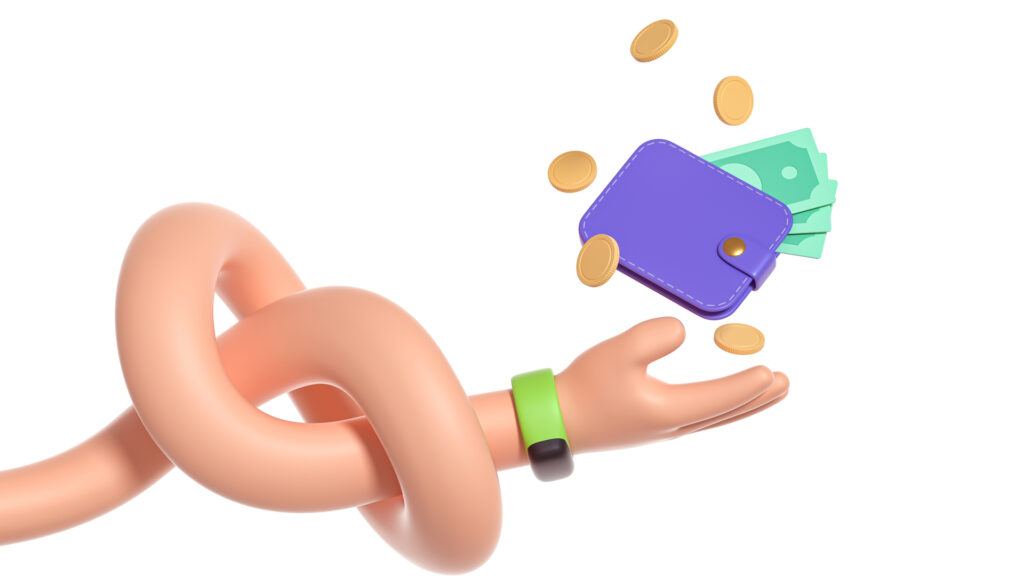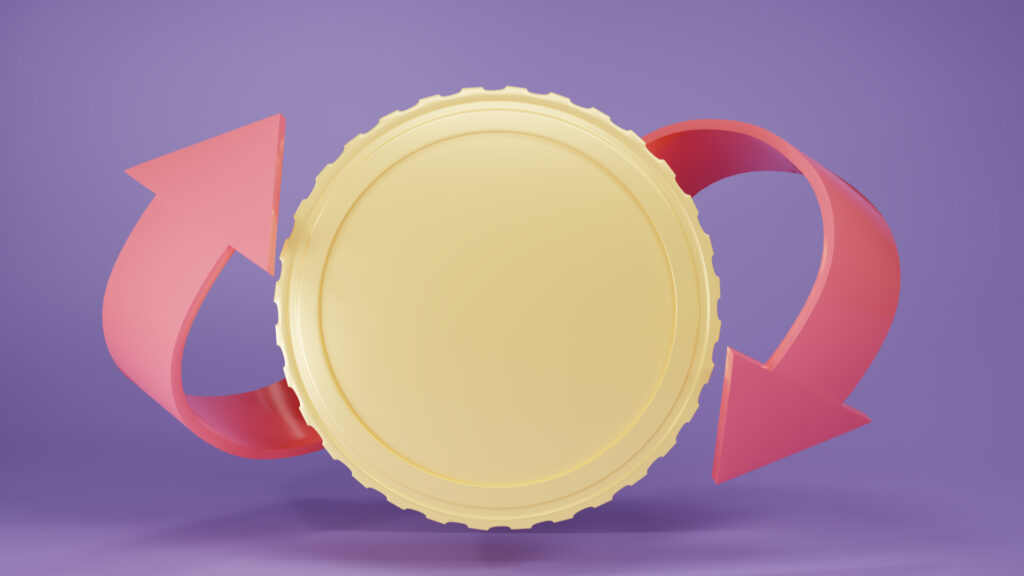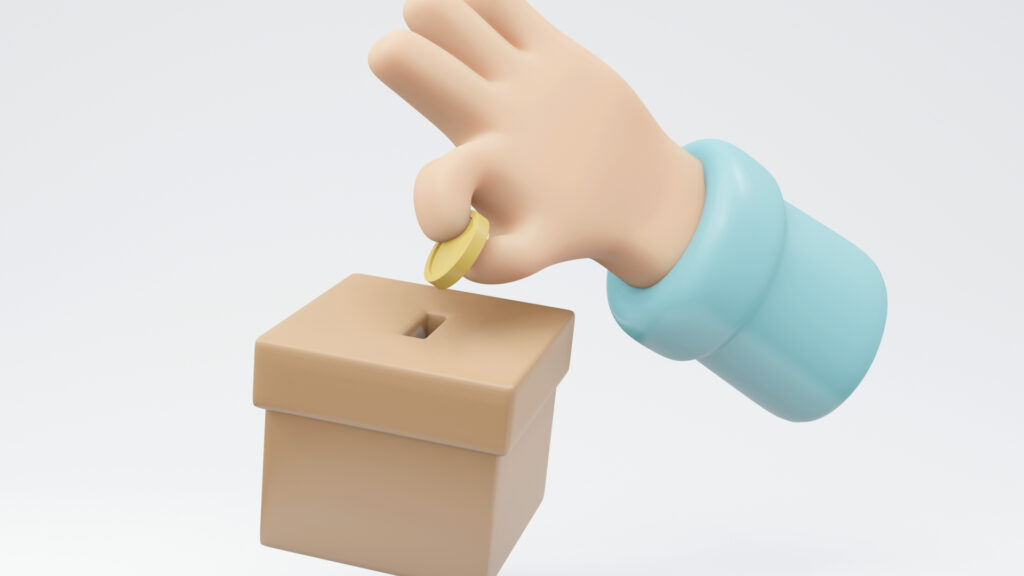What is Bitcoin?
Bitcoin, or BTC, is an alternative to fiat money and is used as a payment for goods or services. Due to its underlying blockchain technology, it is fully decentralized, meaning that you can't control the system from the inside or the outside.
Bitcoin was introduced in 2009, which produced a real revolution in the financial industry. Since then, BTC has been one of the most common and popular cryptocurrencies – to this day; Bitcoin dominates in the virtual currency market trends. The current market capitalization of Bitcoin exceeds $300 billion, the highest capitalization of the cryptocurrency of all existing ones. Bitcoin can also be called a pioneer and an inspiration for altcoins – alternative coins, that is, any cryptocurrency except the Bitcoin itself.
Who started Bitcoin?
The domain name Bitcoin.org was registered in August 2008. However, it is believed Bitcoin, or at least the concept of it, was invented long before that, as evidence of work on the new electronic money system first surfaced on the forum before August.
Bitcoin was created by Satoshi Nakamoto, a person or group under an assumed name. No one knows if Satoshi exists, and courts are still receiving lawsuits from various people demanding recognition as the creator of Bitcoin. Anyway, it was Bitcoin's creator who once published a white paper on Bitcoin's official website explaining how the technology works. Moreover, as early as January 3, 2009, the first Bitcoin block - the so-called "zero block" or "genesis block" - was mined through the mining process.
However, Satoshi decided that the endless mining of blocks was unsuitable for Bitcoin's evolution. Therefore, the rewards for miners had a value of their own. So, for every 210,000 blocks mined, the reward gets halved. Indeed, the process is called halving. So, in 2009 you could get 50 Bitcoins for mining a block; in 2020, you will get 6.25. Consequently, one day Bitcoins will run out entirely because miners will get all the existing ones. But Bitcoin value is not predicted to fall from this - as the supply of BTC on the market will become even more limited, providing the cryptocurrency with a new round of popularity.
How does Bitcoin work?

So, how does Bitcoin work today? Well, Bitcoin is explained based on the principles of blockchain.
Blockchain is a shared database for storing data. This data is heavily encrypted and protected by algorithms. In the case of cryptocurrency, this data is transactions. They get collected into blocks, that is, into common "pools." It is these blocks that the miners check. When a new transaction takes place on the blockchain, the information from one block gets copied into a new block with the same data. There, it is encrypted again, making it impossible to forge or alter the transaction.
Who are miners? Simple: a miner is a user who owns software that allows them to quickly perform the purely mathematical task of finding the "key" to the cipher of the data in the block. The "key," also called a hash, is a 256-bit number that contains information about the hash of the previous block and all previous blocks (from the date and time it got opened to all the blocks, including a randomly generated 32-bit number). Due to the need to purchase high-performance and expensive equipment to unlock the blocks, everyone cannot enjoy Bitcoin mining. Once a block is verified, miners get rewarded with Bitcoins. They can pay with them just like with regular "Bitcoins," i.e. it is the same cryptocurrency.
How to Mine Bitcoin
How does Bitcoin mining work? What is mining anyway? Mining is the verification of transaction blocks by operating special equipment. Mining is rewarded with new coins, which get paid out to the miners in a strictly defined amount. Bitcoin's main competitor, Ethereum, was also only possible to mine until September 22, 2022. The Ethereum network now uses Proof-of-Stake, which has the advantage of not requiring electrical costs or expensive equipment, as new coins are paid for storing old coins and refusing to sell them. Storing coins in your accounts also reduces the number of coins on the exchange, positively affecting their value.
So, mining works as follows: special software running on a powerful computer and consuming electricity looks for a number that matches the block hash. The number is randomly generated and matched to the hash until the two match. The number of hashes the software finds per second is called the hash rate. The higher this number, the more likely you will find the hash first. Yes, you will have to compete with other miners, but you will get rewarded with 6.25 Bitcoins. In the Bitcoin network, one block gets checked for about ten minutes. During that time, the software can go through billions of hash values.
Miners have devised a way to make mining Bitcoins easier for themselves. You can set up a mining pool, an association of miners that mines blocks using all the computers available simultaneously. That makes mining a lot easier than mining from a single computer. The blocks get found faster. The rewards get distributed among the members of the pools according to how much they have contributed towards the pool for mining. If you provide three computers, you will get more Bitcoins than using only one computer.
What to do to mine bitcoins at home? First, buy a powerful computer and create a special program to mine the cryptocurrency. Also, you must be ready to pay a huge electricity bill and replace computer internals after six months or even a year - they tend to break down fast. If you can't afford to buy equipment, you can rent it - it is several times cheaper, but you will earn much less than if you have your high-end computer.
How to buy and sell Bitcoin

Investing in Bitcoin starts with buying your first BTC. Buying Bitcoin is simple, and the best way to buy Bitcoin is from a major exchange not involved in money-laundering scandals.
Step 1: Choose a cryptocurrency exchange with exchange possibilities
A cryptocurrency exchange is a platform where you can buy and sell cryptocurrency. In some cases, cryptocurrency, including Bitcoin, can be purchased with fiat money (e.g. US dollars or euros). Typically, crypto exchanges require proof that you are genuine; they may ask for passport pages, driving license, address, and utility bill statements.
You can check the exact Bitcoin price and see the Bitcoin market cap and the Bitcoin fear and greed index, all important indicators for investors. You can also read expert price predictions, trading industry news, and more. Most of the time, the exchange is a full-fledged media: there are texts, videos, social media with funny videos, and, of course, an opportunity to purchase cryptocurrency.
The list of major crypto exchanges includes Coinbase, Kraken, Robinhood, and Gemini. However, they all differ in buying and selling fees and interface structure, so the choice depends solely on your financial capabilities and preferences.
Step 2: Choose a payment method
You can transfer fiat currency to the exchange, link a debit card to your account, or pay for your future cryptocurrency purchase via PayPal or Apple Pay. Most bank transfers will not charge a fee but require proof of identity.
Step 3: Place an Order
Everything works the same way here as on a regular exchange. You place an order of one kind or another:
- Market – the price of Bitcoin you buy it at, and it takes no more than a second;
- Stop the Order - you specify how many Bitcoins you are willing to buy or sell and the cost at which you are ready to buy or sell. The only goes through if the price and amount of the buy/sell matches the supply or demand on the market;
- Limit - you buy or sell Bitcoins at the price you specify or at a higher price.
- After you place an order, you wait for it to get fulfilled, or if it was a market order, you count the newly purchased coins. If one Bitcoin is too expensive for you, you can buy 0.01 or 0.1 BTC. Then you can sell what you bought. Just be aware: if you do that within a year of your purchase, you will pay regular income tax, but if you keep the asset longer than a year, you will have to pay capital gains tax. These rules apply to US tax residents - residents of other countries are better off checking the laws themselves.
Bitcoin Wallet

A Bitcoin wallet can be a cold wallet or a hot wallet. A cold wallet is a hardware wallet not connected to an exchange or the internet. It usually looks like a flash drive. You connect to it with a unique password (an initial phrase).
A hot wallet, on the other hand, is a wallet on an exchange or in a separate application connected or able to be connected to the internet. Therefore, hot wallets are not considered as secure as cold wallets.
In addition to Bitcoin wallets, there are bitcoin cards. These are debit cards to which Bitcoins are transferred instead of fiat currency. Such cards are trendy in the US. Indeed, it's likely that big banks will soon start issuing Bitcoin cards as Bitcoin becomes more integrated into the world's payment systems.
How to use Bitcoin
How you can use Bitcoin today:
- Buy other cryptocurrencies. Here it is the same as in real exchangers located in your city. You exchange one cryptocurrency for another, pay a commission, and trade with the new cryptocurrency.
- Buying fiat money. You can exchange Crypto for fiat currency. It is a universal rule that works for almost all exchanges.
- Buy commodities. Below we'll tell you precisely what you can buy with Bitcoins right now. But remember, the current list is vast - BTC appears among new ways to pay for different goods and services literally every day!
- Lend out loans. Yes, you can give away your Bitcoins as a loan and get interested. And it will be higher than bank loans. However, one caveat is that this way of earning Bitcoins is suitable only for experienced investors - so be careful.
- Buy investment assets - for example, futures, stocks, and other securities of big companies.
What can you buy with Bitcoin?
Bitcoin is so valuable, with the worth of it, you can even buy a car and a premium watch with it: Lamborghini and Subaru, Rolex and Patek Philippe (through online retailers), and watches by Franck Muller. Furthermore, Bitcoin was even accepted as payment for Tesla electric cars for a while! You can also use Bitcoin to pay for AT&T, Microsoft, and Newegg products. It's also accepted on e-commerce platform Overstock, Shopify, and Japanese retailer Rakuten. You can also use Bitcoins to pay for "tips" on Twitter and donations on Twitch. Corporations like eBay are exploring cryptocurrency and NFT as part of their products. You can also buy a Chicago Sun-Times and Time insurance subscription from AXA or Metromile. And that's not even a third of the whole list!
The Future of Bitcoin
Bitcoin, like other cryptocurrencies, can rise and fall, a situation considered normal for the crypto market. The behavior of currencies gets influenced by the mood of investors and major market players, macroeconomic uncertainty, a shaky stock market, inflation, a possible economic recession, and interest rates in the 'real' world. With all this in mind, experts suggest that Bitcoin will soon begin another period of growth, but in the meantime, crypto-enthusiasts and savvy investors can buy into the currency at a low cost. Since 2011, the value of BTC has gone up and down, with price spikes followed by price pullbacks. The volatility is short-term - of course, compared to long-term growth. Bitcoin has already taken its place in the firmament of the best crypto projects of the century, but new - and positive - records for the value of this cryptocurrency are still to come.